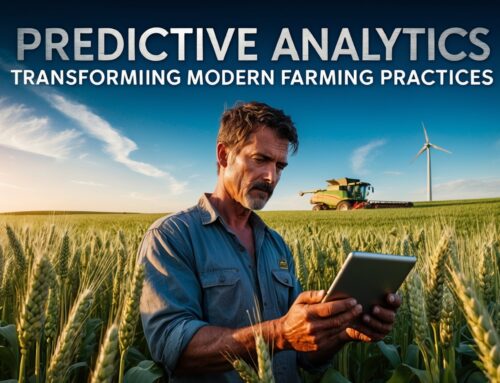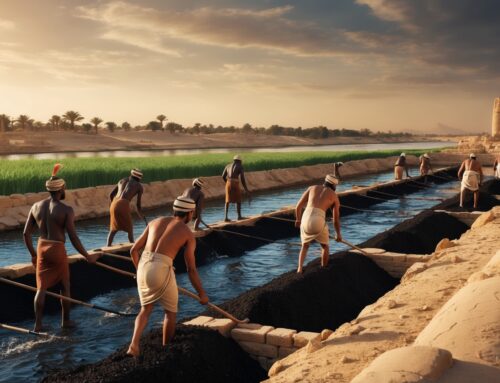Soil type is one of those things you might not think about every day—but it has a huge impact on how your crops grow and how much water they need. Whether you’re dealing with sandy soil, clay, or something in between, understanding how soil type affects moisture readings can make all the difference in your irrigation practices. Let’s dig in (pun intended) and learn how different soil types influence your soil moisture readings and how you can use this knowledge to improve your crop yields.
Sandy Soils: Quick Drainage, Quick Responses
Sandy soils are like the daredevils of the soil world. They heat up quickly, cool down just as fast, and, most importantly, water flows through them at lightning speed. If you’ve got sandy soil, you already know it doesn’t hold onto water for long—it’s kind of like trying to keep water in a bucket with holes. Because of this, soil moisture sensors in sandy soils need to be responsive and fast.
Capacitance sensors, like Terrestream’s Irrigauge, are ideal for sandy soils because they can quickly detect moisture changes, allowing you to stay ahead of the curve. If you’re using a resistance sensor, you might find that it’s a bit like trying to use a sundial to tell time in a rainstorm—slow, inconsistent, and not exactly what you need for precise irrigation.
With sandy soils, it’s all about timing. You’ve got to water just enough to keep your plants happy without losing too much to runoff. Using a quick-response sensor can help you get your irrigation just right, so you don’t end up with thirsty plants or wasted water.
Clay Soils: Water Retention and the Importance of Calibration
If sandy soils are the daredevils, clay soils are the “slow and steady” types. They hold onto water for much longer, which can be both a blessing and a curse. On the one hand, you don’t have to water as often. On the other hand, if you overwater, you could end up with a swamp that your crops won’t thank you for.
Clay soils can become compacted, especially when wet, which affects how sensors read moisture. This is where calibration becomes incredibly important. Capacitance sensors, like those used in the Irrigauge, are well-suited to the intricacies of clay soil, but they still need to be calibrated to ensure accurate readings.
Calibrating your sensor for clay soil can help you avoid overwatering, which leads to root rot and wasted resources. It also helps you better understand how the moisture moves through your soil—because, trust me, clay doesn’t always play by the rules. One minute it’s a sponge, and the next it’s concrete. Proper calibration helps you navigate these quirks and make better irrigation decisions.
Loam Soils: The Goldilocks of Soil Types
Loam soils are often called the “ideal” farming soil, and for good reason. They’re a balanced mix of sand, silt, and clay, which means they hold onto water just the right amount—not too much and not too little. If you’re lucky enough to be farming on loam, you’ve got the Goldilocks of soil types: not too fast-draining like sand, not too dense like clay.
The great thing about loam soils is that they’re pretty forgiving, and most types of soil moisture sensors will work well here. However, if you’re looking for precision, capacitance sensors still have the edge. They provide quick, reliable readings, which helps ensure that your crops get the perfect amount of water every time.
Loam soils are easier to work with, but that doesn’t mean you should take them for granted. Consistent moisture monitoring helps you make sure your plants are always in their comfort zone, even during unexpected heat waves or dry spells.
Soil Structure and Its Impact on Moisture Retention
It’s not just the type of soil that matters—it’s also the structure. Soil structure refers to how soil particles clump together. Good soil structure means more air pockets, which are great for roots and for holding onto moisture. Poor soil structure means fewer pockets, more compaction, and less room for water and air.
Farmers can improve soil structure through practices like reduced tillage, cover cropping, and adding organic matter. Better soil structure means better moisture retention, which translates to more consistent moisture levels for your crops. Soil moisture sensors like the Irrigauge can help you monitor these improvements over time, giving you a clear picture of how your soil management practices are paying off.
Historical Reference: The Struggle of Soil Management
Back in the day, farmers didn’t have fancy sensors to help them out. Instead, they relied on experience and a bit of luck to figure out what their fields needed. During the Great Depression, many farmers in the Midwest learned the hard way about soil type and structure. The combination of loose, over-tilled soil and severe drought led to the Dust Bowl, one of the worst agricultural disasters in U.S. history.
The Dust Bowl taught farmers a harsh lesson: soil management matters. Today, we have the benefit of modern technology, like soil moisture sensors, to help avoid the mistakes of the past. By understanding your soil type and using tools like Terrestream’s Irrigauge, you can make more informed decisions that keep your soil healthy and productive.
Choosing the Right Sensor for Your Soil Type
The type of soil you have is a big factor in choosing the right moisture sensor. For sandy soils, you need something fast and responsive—capacitance sensors are your best bet. For clay soils, calibration is key to avoid overwatering, and capacitance sensors excel here too. For loam, the choice comes down to what level of precision you need, but you can’t go wrong with a reliable sensor like the Irrigauge.
At the end of the day, knowing your soil is half the battle. The other half is using the right tools to keep it healthy and productive. Whether you’re dealing with the quirks of clay or the quick-draining nature of sand, Terrestream’s Irrigauge can help you make the best decisions for your farm.
Conclusion: Knowledge Is Power
Understanding your soil type and how it affects moisture retention is crucial for making informed irrigation decisions. Each type of soil has its own quirks, and the right sensor can help you navigate these challenges. With Terrestream’s Irrigauge, you get accurate, real-time readings that help you understand what’s happening below the surface—so you can keep your crops thriving, no matter what type of soil you’re working with.
Ready to take control of your irrigation? Check out Terrestream’s Irrigauge, FieldLink, and FieldHub to see how our technology can help you master soil moisture management and make every drop count.





